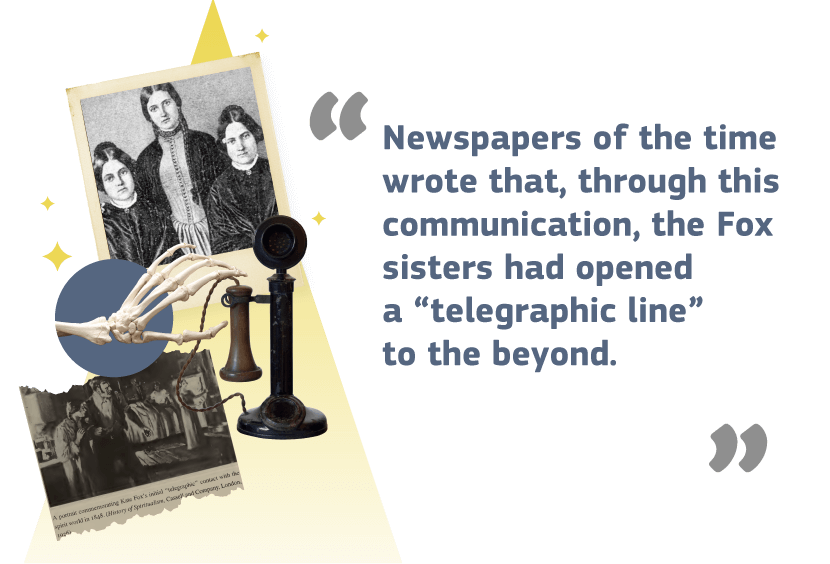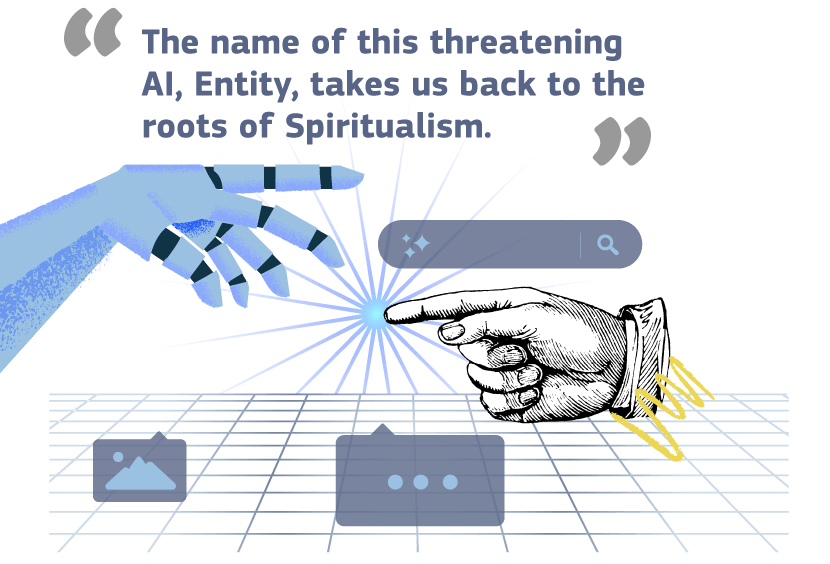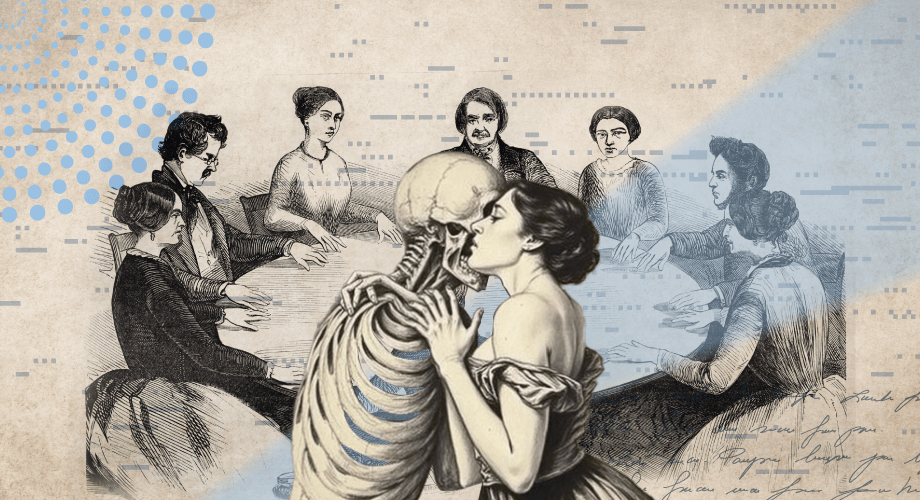Four years after Samuel Morse’s public demonstration of the telegraph on May 24, 1844, a new form of communication spread across America: communication with the dead. In the village of Hydesville, New York, on the night of March 31, 1848, the Fox sisters began a two-way exchange with the spirit haunting their home through coded knockings. The sisters clapped their hands, and the spirit responded with creaks on the wooden floorboards that corresponded to an alphabet. Newspapers of the time wrote that, through this communication, the Fox sisters had opened a “telegraphic line” to the beyond. The Hydesville rappings marked the beginning of the modern Spiritualist movement in America, which held that the souls of the dead could communicate with the living.
The occult allure of paranormal phenomena flourished unexpectedly during the great expansion of telecommunications. Spiritualists themselves emphasized their credibility by invoking electromagnetic telegraphy. Books circulated with titles such as The “Celestial Telegraph”, and “spiritual batteries” were used in séances, where participants held a magnetized cord whose ends were immersed in buckets of copper and zinc water. The reference to the telegraph distinguished Spiritualism from older superstitions and lent it a veneer of scientific plausibility.

A Call from the Beyond
By the late 19th century, Spiritualism had begun to decline. Many of the “wondrous cases of communication” were revealed to be frauds. In 1888, the Fox sisters—who had initiated the “spiritual telegraph”—admitted that they themselves had produced the raps of the dead. Yet the notion that electronic technology could grant access to “another, invisible reality” was reinforced through 20th-century works of fiction, as well as through new inventions in telecommunications such as wireless telegraphy and the telephone.
Agatha Christie’s Personal Call (1954) is a radio play in which James Brent receives telephone calls from his deceased wife. The call gradually uncovers his past: the murders of three women. The play uses the telephone as a “spiritual medium,” echoing 19th-century Spiritualist traditions. Ultimately, the metaphysical experience is revealed to be a trap, shedding light on the relationship between technology, deception, and the supernatural. Disembodied electronic communication, which abolishes the limits of time and place, excites the imagination of the public and fosters the idea that it might also dissolve the boundaries between the natural and the supernatural.

Past Delusions, New Perils
The notions described above, which today seem exceedingly naïve and childish, have survived into the age of cyberspace and virtual reality. Consider the most recent film in the Mission Impossible series. Whereas in earlier installments the villain was usually a crime syndicate attempting to destroy the world with nuclear or biological weapons, in the latest version the ultimate antagonist is not a human being but an Artificial Intelligence that went rogue and seeks to enslave humanity.
The name of this threatening AI, Entity, takes us back to the roots of Spiritualism: a hidden entity manifesting in the physical world through the use of technology. Old illusions have now donned digital masks in the 21st century.


